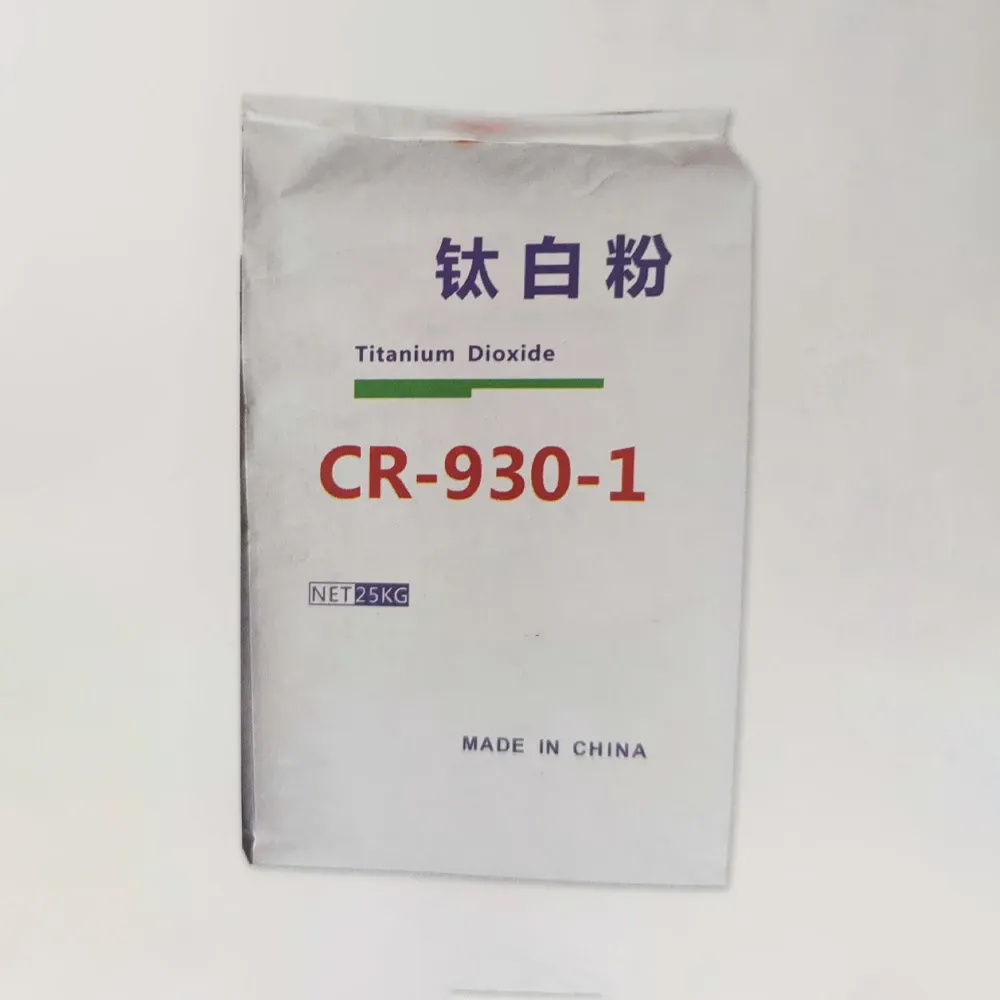
Jun . 23, 2025 11:27 Back to list
The Contribution of Titanium Dioxide to the Weather Resistance of Rubber Under Tropical Climate
Rubber products exposed to tropical climates face severe degradation due to intense UV radiation, high humidity, and temperature fluctuations. To enhance durability, manufacturers often incorporate titanium dioxide (TiO₂) powder as a key additive. The demand for high-quality titanium dioxide powder for sale has surged, particularly in regions with harsh weather conditions, due to its ability to significantly improve rubber’s resistance to environmental stressors.

The Role of Rutile Titanium Dioxide Pigment in UV Protection
One of the primary challenges for rubber in tropical climates is photodegradation caused by prolonged exposure to ultraviolet (UV) rays. Unlike other whitening agents, rutile titanium dioxide pigment excels in UV absorption and scattering due to its high refractive index (2.7) and optimal particle size distribution. When embedded in rubber compounds, TiO₂ particles act as a shield, reflecting and absorbing harmful UV radiation before it can break down polymer chains.
The rutile form of titanium dioxide powder is particularly effective because of its superior light stability compared to anatase TiO₂. Rutile’s crystalline structure minimizes photocatalytic activity, which could otherwise accelerate rubber degradation. This makes it an indispensable additive in outdoor rubber products such as tires, roofing membranes, and industrial seals, where long-term weather resistance is critical.
Titanium Dioxide Manufacture and Its Impact on Rubber Performance
The effectiveness of titanium dioxide white pigment in rubber depends heavily on its manufacturing process. The two primary production methods—sulfate and chloride processes—yield TiO₂ with different properties. The chloride process, which produces finer and purer particles, is preferred for rubber applications because it ensures better dispersion within the polymer matrix.
Additionally, surface treatments applied during titanium dioxide manufacture enhance compatibility with rubber compounds. Silane or alumina coatings prevent particle agglomeration, ensuring uniform distribution and maximizing UV protection. Poorly dispersed TiO₂ can lead to weak spots in rubber, reducing its overall weather resistance. Thus, high-quality titanium dioxide powder with optimized surface treatment is essential for maintaining rubber integrity in tropical environments.
Comparing Titanium Dioxide White Pigment with Alternative UV Stabilizers
While other UV stabilizers, such as carbon black and organic absorbers, are used in rubber formulations, titanium dioxide white pigment offers unique advantages. Carbon black, though effective in blocking UV rays, darkens rubber and limits aesthetic flexibility. Organic UV absorbers, on the other hand, tend to degrade over time and migrate out of the rubber matrix, reducing long-term protection.
In contrast, titanium dioxide powder provides permanent UV shielding without discoloration, making it ideal for light-colored or transparent rubber products. Furthermore, TiO₂ works synergistically with other stabilizers, such as hindered amine light stabilizers (HALS), to enhance overall weather resistance. This multi-functional role makes titanium dioxide a superior choice for rubber exposed to tropical climates.
Mechanisms of Weather Resistance Enhancement by Titanium Dioxide
The contribution of titanium dioxide to rubber’s weather resistance extends beyond UV protection. In tropical climates, rubber is also susceptible to thermal oxidation and moisture-induced degradation. TiO₂ helps mitigate these effects through several mechanisms:
Thermal Stability – The high melting point of rutile titanium dioxide pigment (over 1800°C) ensures it remains stable under extreme temperatures, preventing breakdown under tropical heat.
Oxidation Resistance – By blocking UV radiation, TiO₂ reduces the formation of free radicals that initiate oxidative chain scission in rubber polymers.
Hydrolysis Resistance – Properly dispersed titanium dioxide powder minimizes water absorption, reducing the risk of hydrolysis in humid conditions.
These combined effects significantly extend the service life of rubber products, making TiO₂ an essential additive for tropical applications.
Environmental and Economic Considerations of Titanium Dioxide in Rubber
Despite its benefits, the use of titanium dioxide white pigment in rubber must be balanced with cost and environmental factors. TiO₂ is more expensive than some alternative stabilizers, but its long-lasting performance often justifies the investment by reducing replacement frequency. Additionally, advancements in titanium dioxide manufacture have improved sustainability, with modern processes minimizing waste and energy consumption.
From an environmental perspective, TiO₂ is non-toxic and chemically inert, posing minimal risks compared to some organic UV stabilizers that may leach harmful compounds. As regulations on material safety tighten, titanium dioxide powder remains a compliant and eco-friendly choice for rubber production.
Why Titanium Dioxide is Essential for Rubber in Tropical Climates
In summary, titanium dioxide plays a critical role in enhancing the weather resistance of rubber under tropical conditions. Its superior UV-blocking capabilities, thermal stability, and resistance to oxidation make rutile titanium dioxide pigment the optimal choice for durable rubber products. While alternative stabilizers exist, none match the multi-functional benefits of titanium dioxide white pigment.
For manufacturers seeking titanium dioxide powder for sale, selecting high-quality, surface-treated TiO₂ ensures maximum performance in rubber formulations. As tropical climates continue to challenge material durability, titanium dioxide will remain a cornerstone in the development of long-lasting, weather-resistant rubber products.
-
Application of Titanium Dioxide 2195 in Water Purification
NewsNov.14,2025
-
What are the global market trends of Titanox titanium dioxide in recent years
NewsNov.14,2025
-
Effect of particle size distribution on the optical properties of R996 TiO2
NewsNov.14,2025
-
Latest Technological Innovations in Rutile Titanium Dioxide Manufacturing
NewsNov.14,2025
-
Compatibility of Titanium Dioxide Concrete Pigment with Different Concrete Admixtures
NewsNov.14,2025
-
Environmental Impact of Titanium Dioxide Pigment Manufacturing and Mitigation Measures
NewsNov.14,2025
